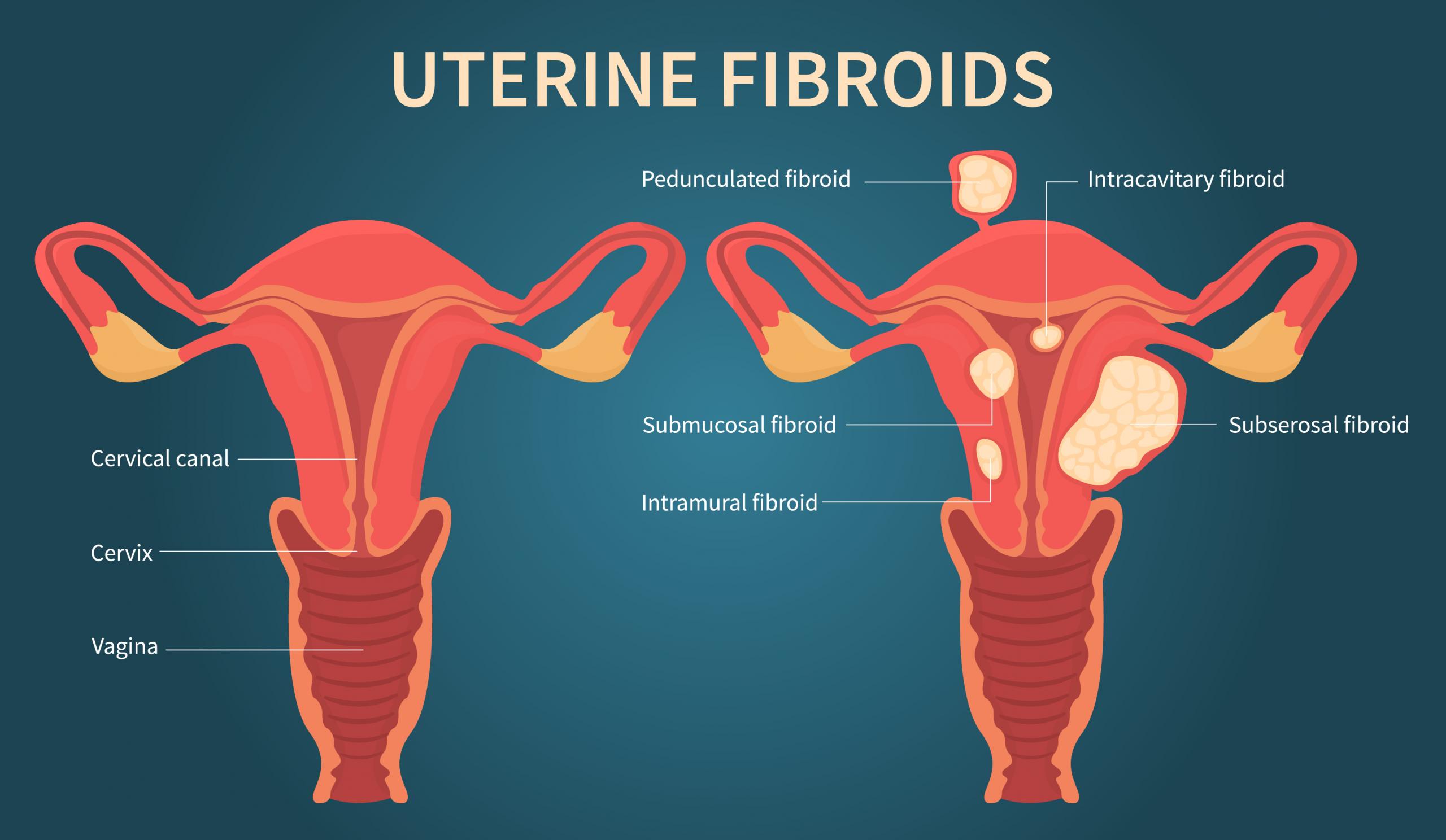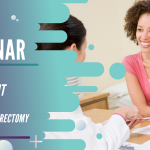
Too often, women are told their symptoms are “just part of being a woman.” But painful periods, extreme fatigue, or feeling bloated for days on end is not normal—and you deserve answers. Understanding your options and speaking up for your health is the first step toward feeling like yourself again.
Uterine fibroids, medically known as leiomyomas, are the most common benign (non-cancerous) tumors of the female reproductive system. Fibroids typically develop in women of reproductive age. These tumors grow both within and outside the wall of the uterus. Fibroids are usually round in shape and range from the size of a seed, to as large as a grapefruit; however, most fibroids are 1 inch or smaller. Fibroids are made up of smooth, muscle cells and fibrous connective tissue. When they grow large enough to put pressure on the bladder or other nearby pelvic organs, they can an increase in urinary urgency, increase constipation, abdominal bloating, and intense pelvic pain. The symptoms depend on the size and location of the fibroids within the uterus and how close they are to various organs.
Most common symptoms include:
- Heavy, prolonged bleeding
- Pressure on the bladder causing urinary urgency
- Pelvic pain – either constant, dull aches or shooting pains
- Pain during intercourse if the fibroids are close to the cervix
- Constipation
- Abdominal bloating
- Not able to conceive, or miscarriage
- Anemia, causing fatigue
Causes of fibroid development
Though the exact reasons for the growth of fibroids are still unknown, an excess of estrogen seems to influence their development. Fibroids are sensitive to estrogen, therefore girls who begin menstruating before the age of 11, are more likely to develop fibroids compared to those who begin menstruating after 13.
Part of the fibroid puzzle is also genetic. A woman with fibroids is likely to see her daughter developing them in her teens, and the woman’s mother too most likely had fibroids in her lifetime.
Estrogen has a role to play
In some families, every generation of women develops fibroids while in some other families, cousins and aunts on the paternal side got affected by them. While estrogen has long been known to affect fibroids’ growth, recent research suggests that progesterone hormone may have an equal role to play. Women of African-American backgrounds are more likely to develop fibroids at some point in their lifetime.
The role of estrogen and progesterone in fibroids development is further substantiated by the fact that one of the most potent treatments for fibroids – GnRH or gonadotrophin releasing hormone agonist, works by decreasing the levels of both estrogen and progesterone in our body.
Increase in estrogen hormone level during pregnancy tends to contribute to the growth of fibroids. If you already have fibroids, some of them will enlarge during your first trimester and then shrink of their own after birth. In general, uterine fibroids tend to shrink after you reach menopause.
Types of Fibroids in the Uterus
Uterine fibroids are noncancerous growths that develop in or around the uterus. While they can vary in size and number, fibroids are generally grouped into four main types based on where they grow:
1. Intramural Fibroids
These are the most common type. They grow within the muscular wall of the uterus and can cause the uterus to appear larger than normal. Symptoms might include heavy bleeding, pelvic pain, or pressure.
2. Subserosal Fibroids
These fibroids develop on the outer surface of the uterus. They can grow large and may press on nearby organs like the bladder or bowel, leading to urinary or digestive issues. They don’t always cause menstrual problems.
3. Submucosal Fibroids
These fibroids grow just beneath the inner lining of the uterus (the endometrium) and can bulge into the uterine cavity. They are less common but are most likely to cause heavy or prolonged menstrual bleeding and fertility issues.
4. Pedunculated Fibroids
These fibroids are attached to the uterus by a thin stalk, like a mushroom. They can grow either inside or outside the uterus and might cause pain if the stalk twists.
Other Fibroid Risk Factors
Women with fibroids often report heavy and painful periods from a young age. The loss of blood supply ischaemia) during menstruation may cause damage in the uterus, leading to the formation of fibroids. Another risk factor researchers are studying is the relationship between birth and fibroids. Women who have given birth at least once, seem to have a decreasing risk of developing these tumors. Another aspect researchers are considering is the link between obesity and fibroid growth. According to one study published in the US National Library of Medicine National Institutes of Health, results suggest that symptomatic fibroids may be associated with obesity. This is because higher levels of circulating estrogens are found in obese women.
When should you see a doctor?
See your doctor if you:
- Have pelvic pain that doesn’t go away
- Have abnormal bleeding between menstrual cycles
- Consistent bleed-throughs, where you’re using more than your normal amount of feminine hygiene products
- Bleeding lasts more than normal, 10 + days
- Experience pain during intercourse
- Urinate frequently
- Experience consistent constipation
- Have abdominal bloating
Some women use medications such as hormonal therapies to manage the painful periods. These medications rarely get rid of their fibroids and can affect some women differently. Surgical options include removal of the fibroids (myomectomy) or removal of uterus (hysterectomy).
Minimally invasive procedures like Uterine Fibroid Embolization (UFE) shrink fibroids, while eliminating symptoms. UFE is an outpatient procedure where the blood supply to the fibroids is blocked by injecting tiny particles. These tiny particles flow into the arteries supplying the fibroids with sustenance, and prevent more blood from entering the tumor. Once the tumor is cut off, it shrivels and dies without any surgery. During the next few days following treatment, the body absorbs the dying fibroids. UFE is known for its quick recovery period. The patient can return home the same day, and recover in the comfort of their home. After 3-7 days, the patient can return to their normal, daily activities and in 1-2 weeks, be fully recovered from symptoms.
Contact Us
We know that uterine fibroids can be painful. We never want anyone to suffer from fibroid symptoms or wonder how they can get treatment. At USA Fibroid Centers, we specialize in a non-surgical treatment for uterine fibroids known as UFE. If you are interested in learning more about this treatment, or if you want to schedule an appointment, give us a call at 855.615.2555. We are happy to answer any questions you may have to help you get the relief you need.




